Torn Paper Collage for Artistic Exploration
Torn paper collage – do you remember making them as a child?
This project is not so much about the resulting image, but about the process.
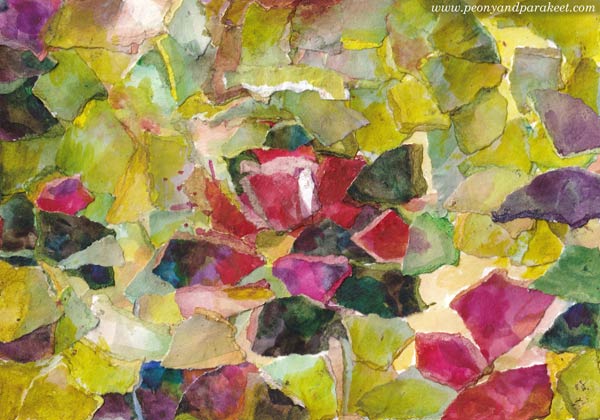
You will need watercolors, thick drawing paper, and paper glue.
I have used Fabriano Accademia Drawing Paper (200 gsm/94 lbs). It’s not as thick as most watercolor papers but holds water well and is nice for collages. I bought this paper for the course Joyful Coloring, and it has become one of my favorites because it’s so versatile.
Step 1 – Paint the Papers
One of the best ways to grow your artistic skills is to move away from ready-made images and make the material for collages yourself.
While creating, think about this!
There’s a hidden miracle in every brush stroke, even in the ugliest ones. The potential of them is huge. Your artistry grows when you keep creating.
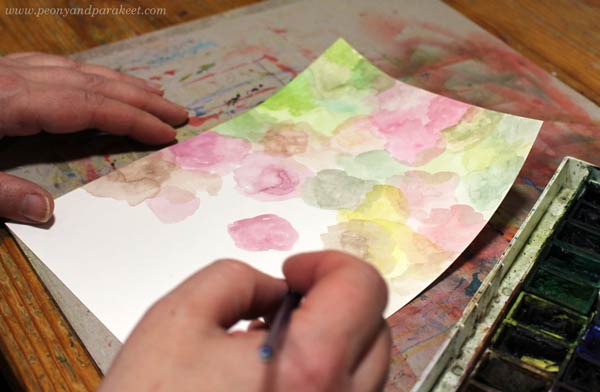
When you make the papers yourself, you can choose colors and add variation that will make every torn paper piece unique.
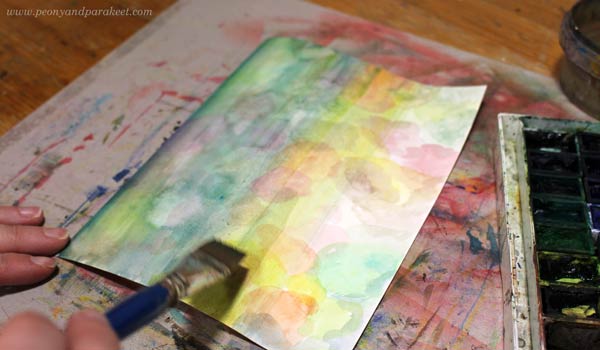
With watercolors, you easily achieve translucent effects and get great pastel tones. But also make a paper with darker and more vivid colors!
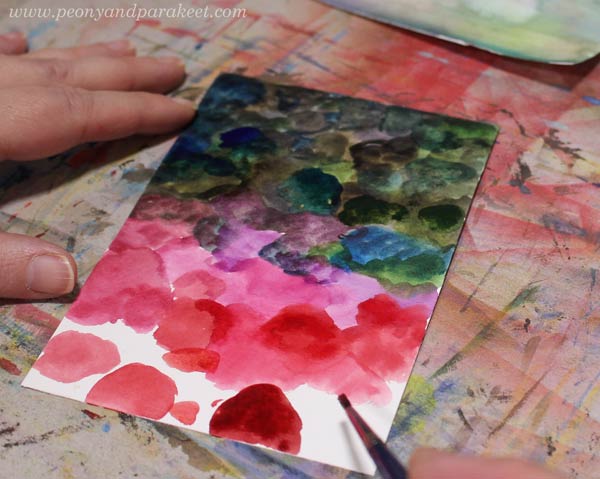
Check that you have all these variations: light, bright, and dark!
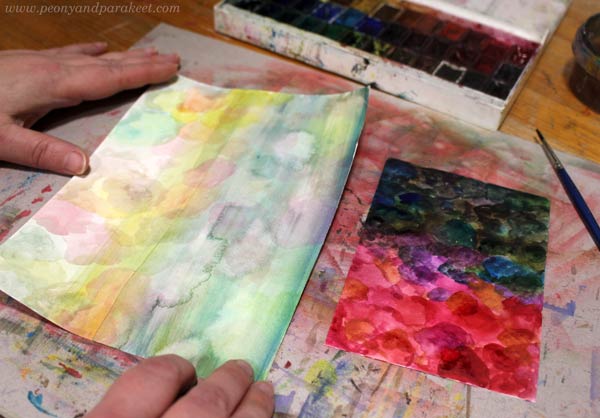
For a small collage, not so many papers are needed. My papers are 1,5 times the size of the final artwork.
Before continueing, think about this!
The papers are precious treasures. Handle them carefully like they would be glass!
Step 2 – Tore the Papers into Small Pieces
Next, let’s “break glass”! With fingers, tore the papers into pieces.
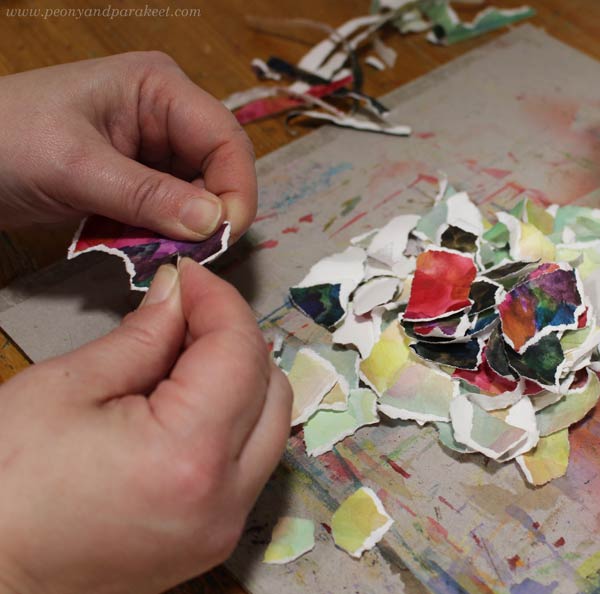
While creating, think about this!
Art is born, when you question what you see, experience, and own. While tearing the paper, let go of pre-assumptions of what you are going to create.
Step 3 – Paint the Torn Edges
The edges are the best part of torn paper collages, but especially when you paint them too. This way you don’t get too much distracting white to your collage, but the result will more colorful and atmospheric.
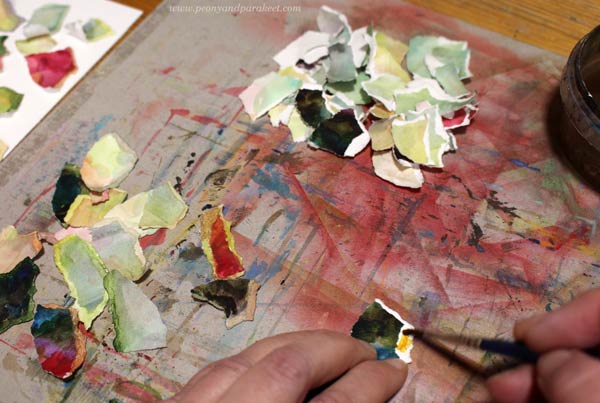
While creating, think about this!
Some people like to think a lot, some are more hands on. In artistic exploration, finding the balance is the key. This exercise is especially for thinkers. Look at the torn pieces – so many new beginnings, seeds for new ideas!
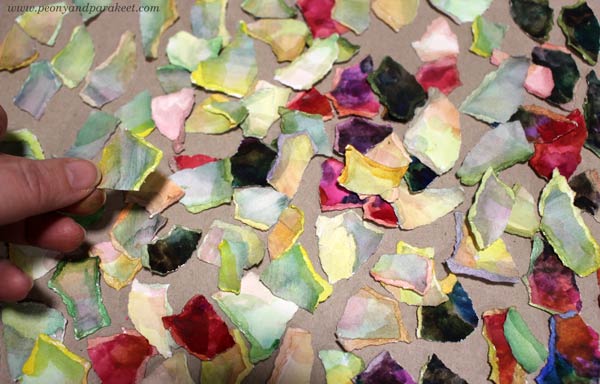
You can also spread the paint partly over the piece so that the color transition is less dramatic and the piece gets more depth. Some of my pieces have more colorful and some more blended edges. Variation is always good!
Step 4 – Glue the Pieces
Pick a blank background paper and glue the pieces on it. My background is fairly small, about 6 x 8 inches. I use Towbow Aqua Liquid Glue. It’s not perfect because it’s a bit brittle when it dries, but I like it because it doesn’t make my fingers sticky.
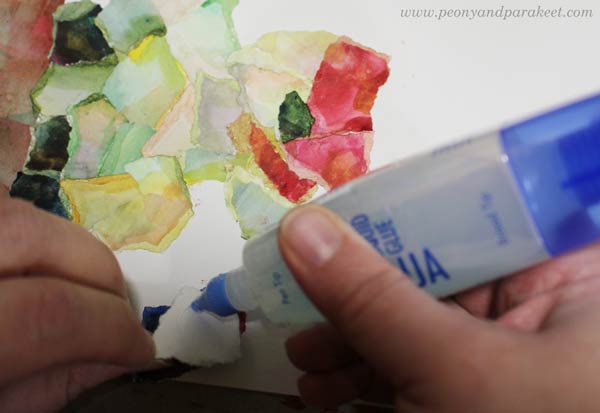
Start from one edge and work towards the center. Save most of the brights for the center and keep the edges less colorful. Create clusters and look for happy accidents.
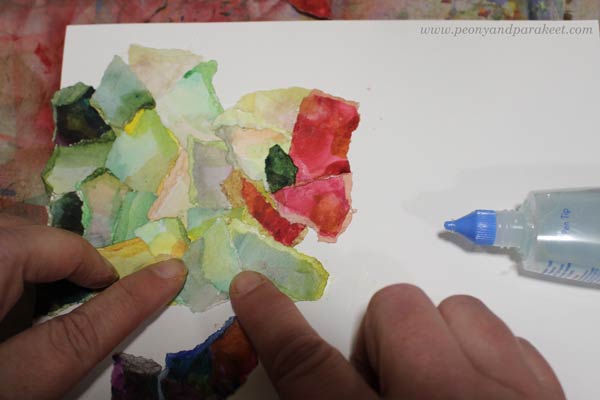
While creating, think about this!
Papers that have been destroyed now get a new beginning. It’s like a window has been shattered and a new stained glass one gives a new view. Always when you create is some kind of distortion. But that’s not a bad thing at alll. We need these new views to make a shift in our lives, to see beyond the obvious.
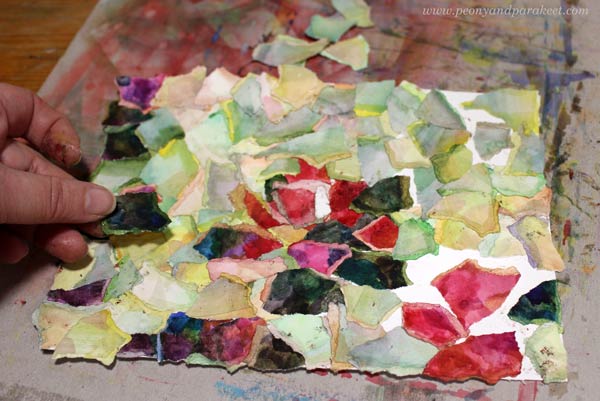
Notice, that you can leave the background partly visible here and there.
Step 5 – Finish with Watercolor
You can still adjust the collage by painting over the pieces.
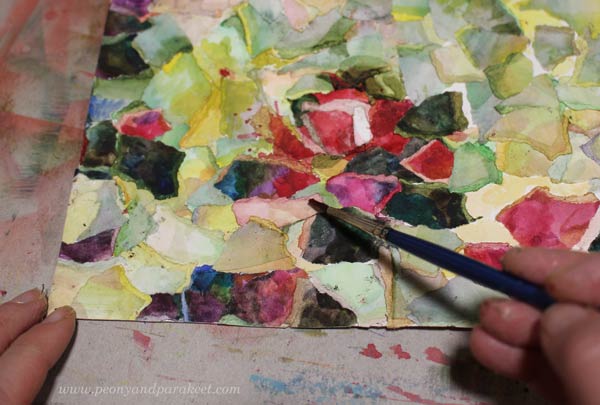
You can add details, but more than that I would recommend adding a thin color layer on most of the pieces so that you get a more unified look. I added yellow over most of the pale greens, and also to the areas where I left the blank paper visible. I like to have white as a highlight color only, and not everywhere.
While creating, do this!
Take a break! Don’t try to do everything in one sitting. Rest and give your mind some time to process what you have been doing!

The collage is now finished, but the process is not. So, proceed to the next step!
Step 6 – Explore Your Torn Paper Collage
Take photos of your torn paper collage. Don’t just take the realistic photo to your archive but get creative! Think about the light and the air and how they create a new layer to everything we see. Take the collage to a place where you get strong sunlight and dark shadows to get a new puzzle over it.
Or if you have a DSLR camera, do what I did: take the collage to a dark room, legthen the exposure so that taking the photo lasts many seconds. Then move the flashlight around the picture and its surroundings.

With the long exposure, you can also move the collage around to get an artistic photo.
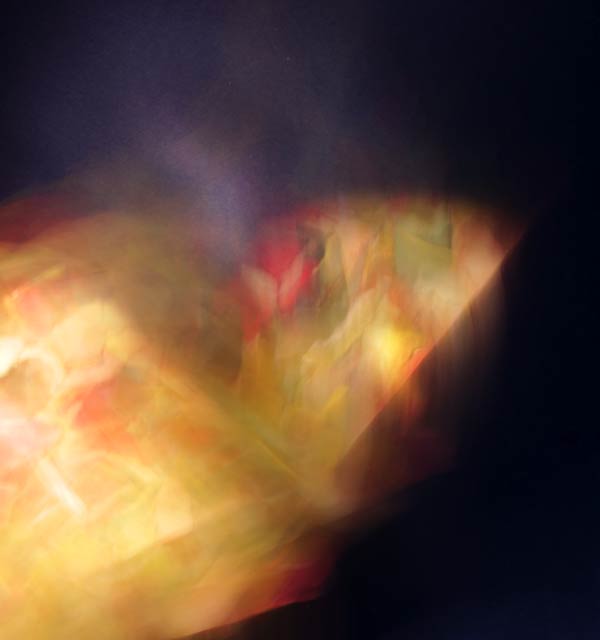
You can start with a blank paper, but end up with painting with light.
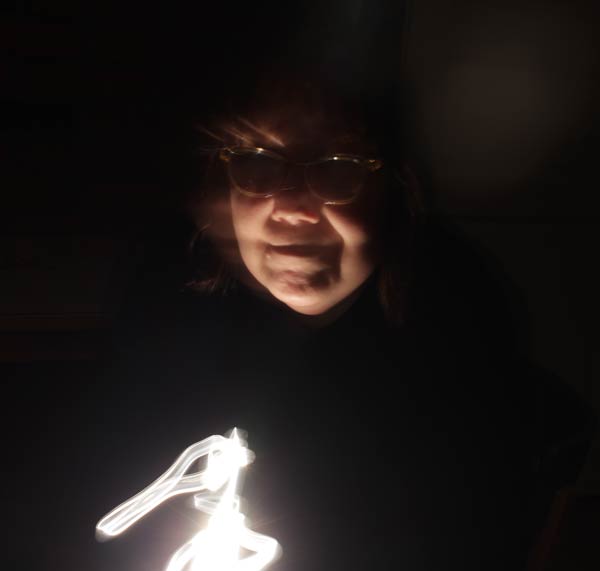
Creating art is not only about mastering techniques or imagining things. Artistic exploration is where freely practice both.
Torn Paper Collage – Where Did This Idea Come From?
The oil painting that I am currently working on, is influenced by my artistic explorations. And, it’s also vice versa. When I looked at the painting that is still in progress, I felt the need to tear some paper, and so the torn paper collage was born.
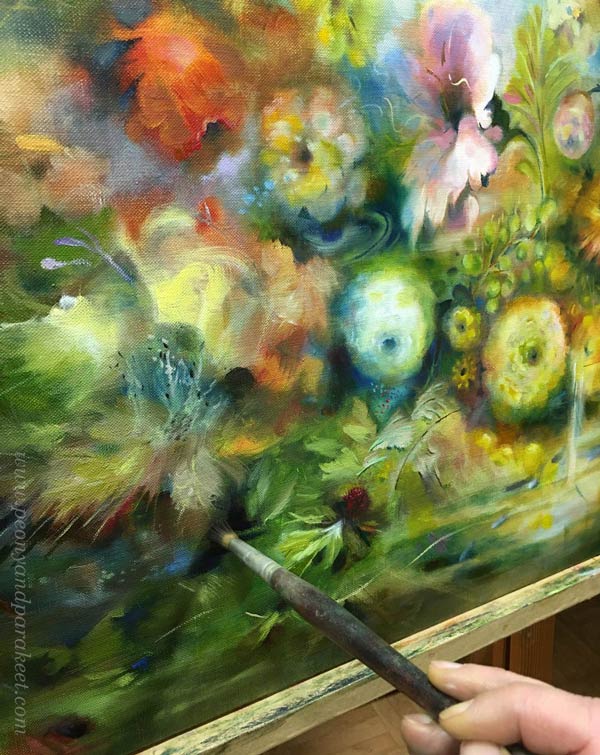
I like to explore movement, so moving the collage under the camera produced an image that is related to this painting. That photo will inspire me when I am adding finishing touches to the painting.
I believe we have to explore to move forward in the path.
What do you think?
Choosing the Word for 2025
Have you ever chosen the word for the new year and then happily forgotten it? Me too!
But last year, I had a word that stuck in my mind. It was “Integrate”. My word for 2025 is “Release”.
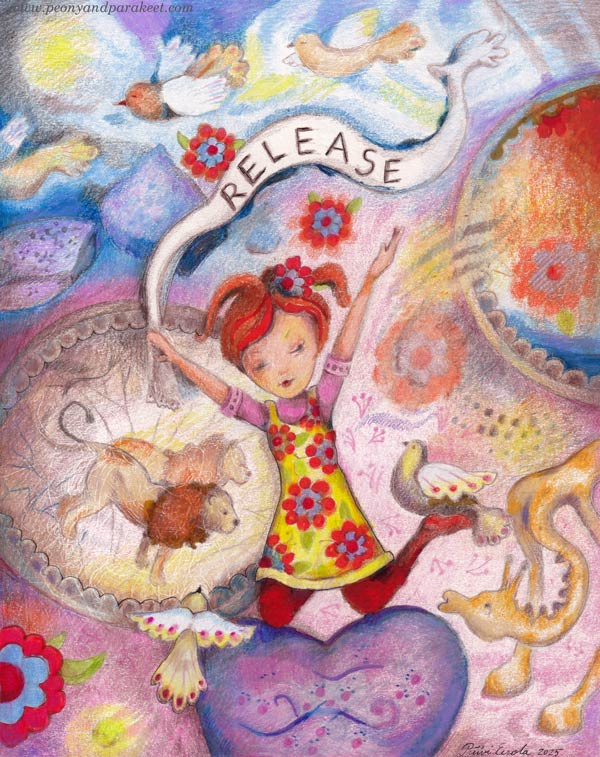
Here’s what I have learned about choosing the word!
Too Much Emotion, Too Little Impact
Some words appeal more to emotion, some to reason. Most often, I have chosen a word that has an emotional appeal. For example, “Imagination”, “Depth” or “Play“. There are plenty of these kinds of soft words, here are some common ones: “Joy”, “Courage”, “Inspire”, “Create”, “Focus”, “Nurture.”
These soft words that make your imagination run wild may seem like good choices, but they have this downside: when you’re busy working, your head is full of rational words. Emotional words don’t come to mind at that moment. This way, the practical connection to the word is missing.
My word for 2024 – “Integrate” – was a rather uninspiring word at first, but it became more and more inspiring over the course of the year. The idea was that even though I was doing a variety of art – drawing, painting and programming digital motion art – I could look for connections between different art forms so that I didn’t have to reinvent everything. I could also value more what I had created in previous years. This union of old and new worked out nicely, and with the word, I began to see my artistic career as a whole and not just an attempt to improve my artistry piece by piece.
The best thing about the word was that it didn’t describe the actual result but solved how to get there. So when I encountered problems, “Integrate” often offered at least a partial solution. That way the word came to mind repeatedly and helped me in situations when my inspiration was at its lowest.
Word That Changes Your Life
I think the best words are those that initiate change for the better. I have often chosen a word that is already familiar and doesn’t make me change anything. This year, my first candidate was “Elevate.” It sounded too soft, so I found a similar rational word “Upgrade.” But since I always try to improve my actions and the level of my art in general, I rejected “Upgrade” and chose “Release” instead.
To me, “Release” means letting go of what I’ve been holding in my heart and letting it come out. I want to give myself permission to be naive, naughty, brutal, overly cute, everything and anything, and start to blindly believe in my artistic vision. Release also means publishing what I’ve done openly and regularly and working with that in mind. Letting go and publishing is a bittersweet combination that really challenges me.
Release also means that I can let go of things if they hinder rather than help the cause.
Drawing the Word for 2025
Writing about the word is good, but I also wanted to process the word by drawing.
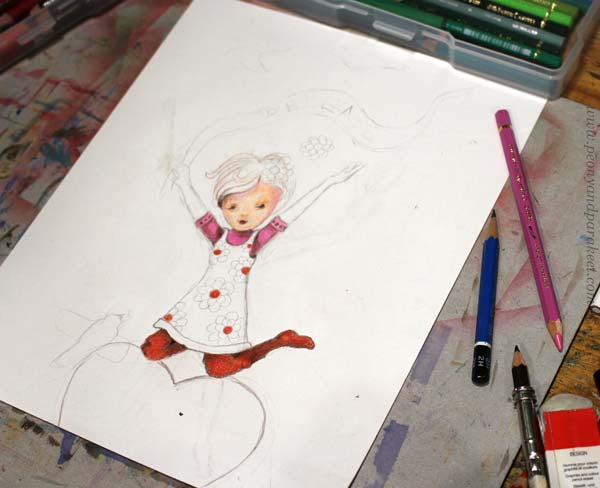
By drawing, you always find new dimensions. Even the hardest words become softer and create emotional connection.
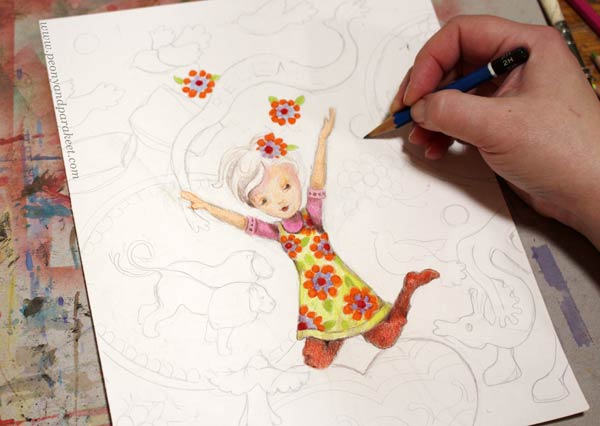
One thing leads to another. I love this way of drawing where the result remains a surprise for a long time.
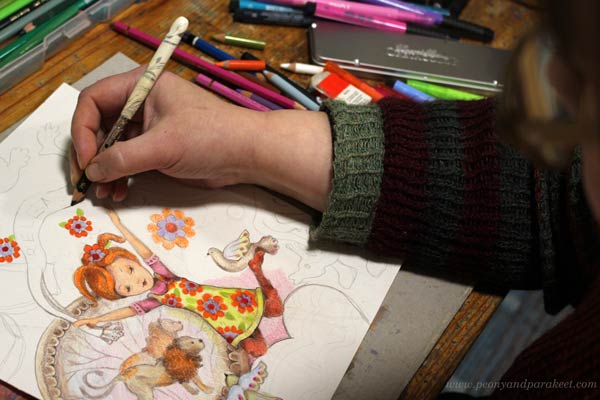
I combined colored pencils and markers here. I like the soft impression of colored pencils, but I used felt-tip pens in the highlights to intensify the colors.

When the drawing was half-finished I compared it to the little pieces I had drawn during the Christmas holiday.
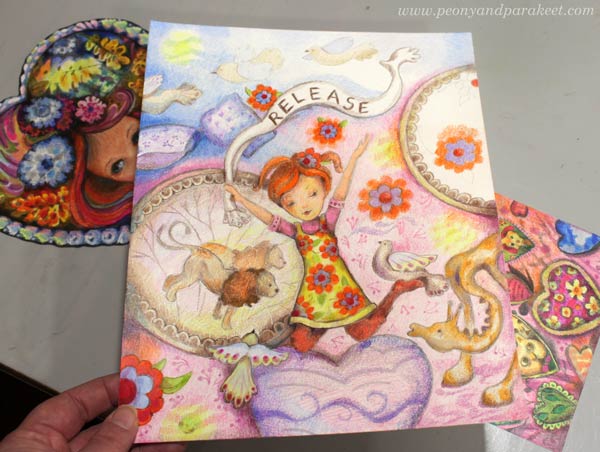
The colors still needs to be strengthened and details adjusted.
Finding the Connection with the Word
Even though this drawing isn’t very big, about letter size, there are a lot of details. I took many breaks and it took me about 3 days to finish the drawing. For the illustration that combines the right and the left brain, it’s important to find the connection between all the details and understand how they express the word.
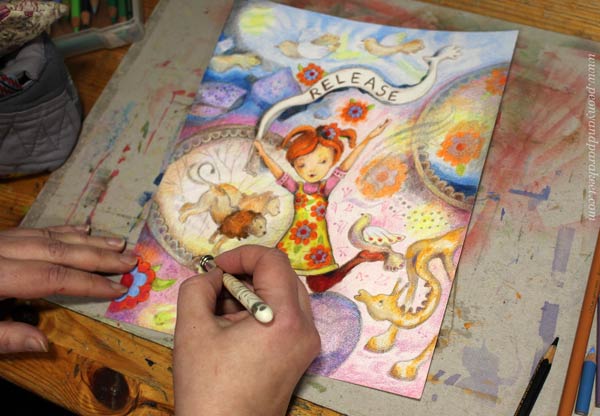
This drawing depicts my childhood in the 70s with plastic animals and daydreaming. The drawing feels revealing to me, although its style is playful.

Even if the picture feels a bit private, I want to share it with you: release, you know!
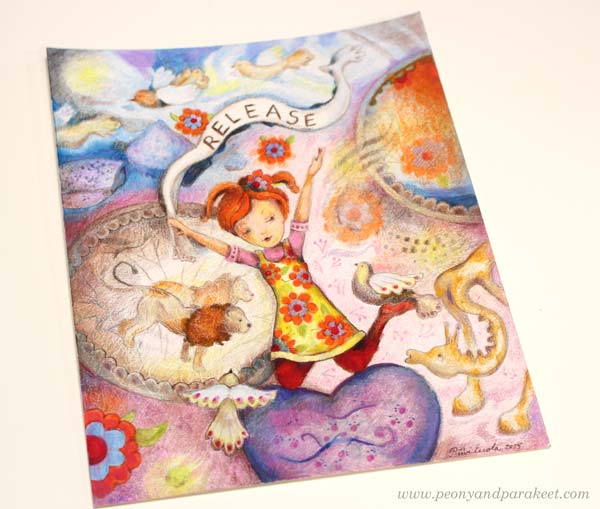
What’s your word for 2025?
Are you going to draw it?
Happy Holidays with Video Artwork
This week, I have a video artwork for you. Here’s how the background story goes:
Far away in an unknown land there is a crazy chapel. Your imagination is this chapel. When you’re there long enough, you can see anything, and experience anything, and some of it leaves a mark on your heart and thus on your art.
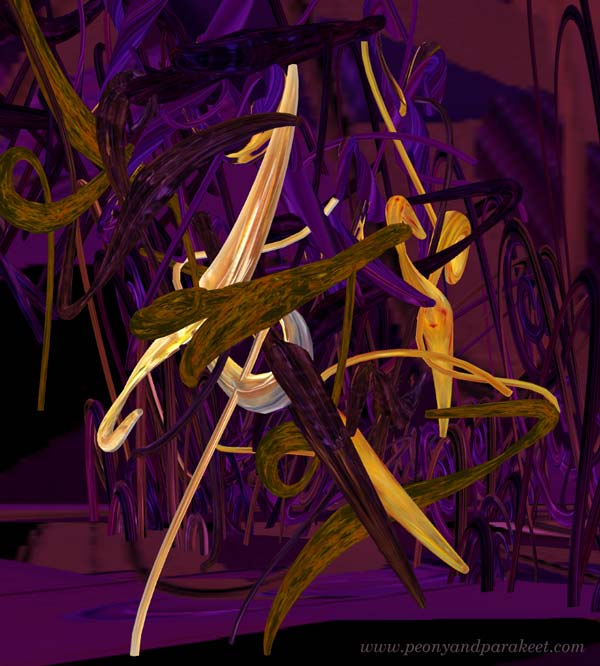
Art is born when you deviate from the paths and go alone to scary places. When you say: “That bench is just an inanimate object,” but still see it breathing. When you say: “These ornaments are just decorations,” but still see them dancing. Then time goes in a direction you don’t recognize, and you can’t control everything that starts spinning in your mind. This wild and crazy imagination is the source of both creative and spiritual life.
Crazy Chapel – Watch the Video Artwork!
I made this video artwork “Crazy Chapel” digitally step by step. The music was improvised on the iPad. The shapes were drawn in the Blender 3D modeling program. The movement and the generation of the shapes were programmed in C# programming language. The code and the shapes were put together in the Unity game engine. The introductory texts and the recorded scene were combined in the Da Vinci Resolve video editing program. This year was special to me, because I not only drew and painted, but also created animated art. (See more of how I make these animations: From Painting to Digital 3D – Video 1, Video 2)
Happy Holidays!
With the video artwork “Crazy Chapel”, I want to wish you happy and relaxing holidays. There are many ways to create, let’s celebrate it during these holidays!
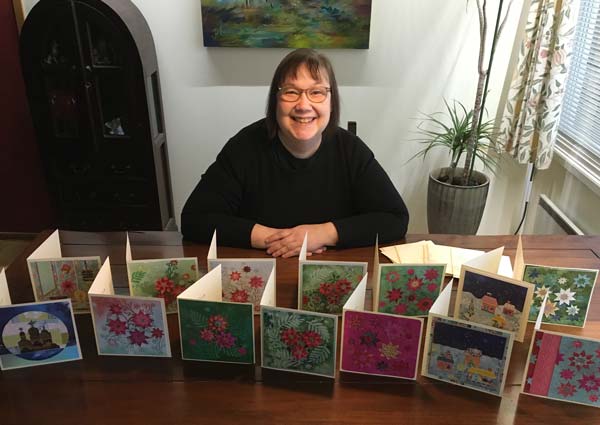
P.S. This blog will be on a break for a week, but will be back after New Year.
P.P.S. I have often publiched a video greeting near Christmas. For example, check the video “Dreaming and Painting at Christmas” from 2015!
Watercolor Flower Obsession
This week, I have a fun video for you. In the video, I create a watercolor greeting card and talk about my obsession of painting flowers.

The card is A5 in size, so about 6 x 8 inches and I have painted it on watercolor paper.
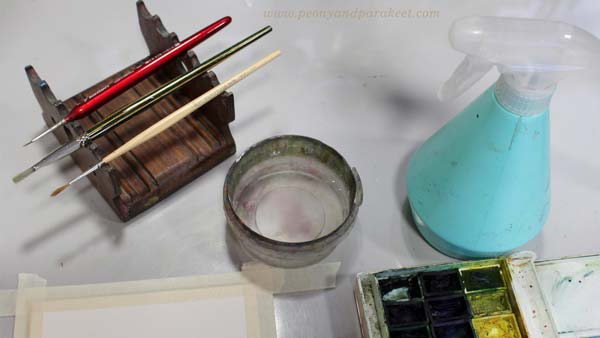
My smallest brush is very narrow and I could have coped with two brushes. In the course Freely Grown, we use the similar process, but finish with colored pencils, so it’s much easier than working with tiny brush strokes.
Watercolor Flower Obsession – Watch the Video!
In this video I confess how goal-oriented I am about painting flowers but also talk about the importance of play.
This video has a lot of material, you may want to watch it more than once to see them all! Also, here’s the link to last year’s greeting card, watch that video too!
Boutique of the Heart
In the video I talk about a boutique that’s not a commercial thing at all, vice versa:
“I believe that we can create the best boutique out of our own art. Imagine your workspace as a paper shop where you sell hand-painted cards, bookmarks, hand-drawn stickers, patterned papers – everything that is already art as such, but from which you can look for inspiration for bigger works. I have even come up with a name for this kind of personal shop. It’s Boutique of the Heart. There’s only one customer in the Boutique of the Heart – you, and one seller and manufacturer – you! The longer you keep the shop, the more you learn to love the things you draw and paint yourself.”
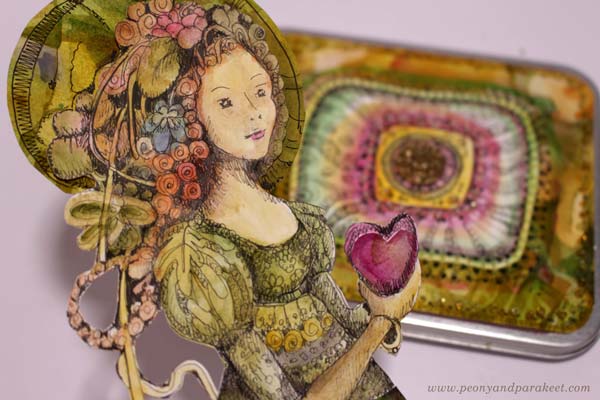
My message is that the essence of art is in play. Thus no matter how high you want to reach, you can still create art with a playful attitude and have your Boutique of the Heart. I know there are art instructors that solely focus on the techniques and those who are about fairytales and imagination, but I feel I am something between. I want to create art with people who want to move forward in art-making, but who also love imagination and free expression.

We can have obsessions, but there should always be time to play too.
What do you think?